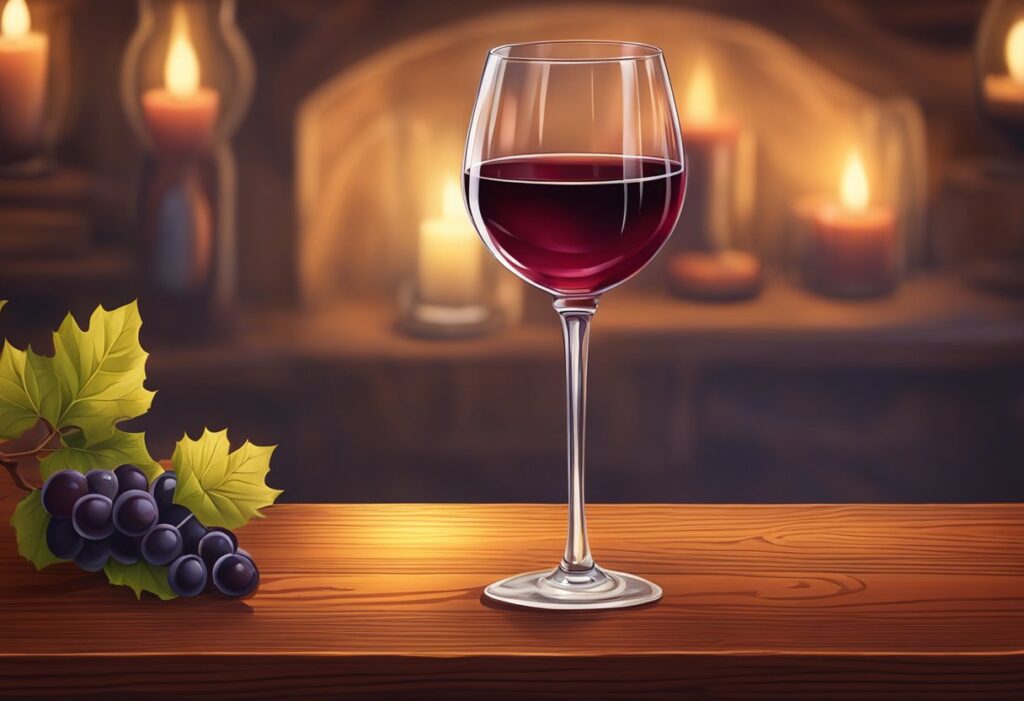Exploring the world of wine can be as intimidating as it is enchanting, with its vast array of flavors, aromas, and styles to experience. Understanding basic wine characteristics is your starting point, a gateway to discerning the subtle differences that make each bottle unique. Consider this guide a roadmap to the essentials of wine appreciation, helping you navigate from the dry whites to the robust reds, and everything in between.

As you embark on this journey, you’ll learn to analyze wine like a connoisseur, picking out the tannin levels, body, and complexity of each sip. Expanding your wine knowledge not only enhances your tasting experience but also equips you with the savvy to pair your meals perfectly and store your collection like an expert. In doing so, you’ll find yourself describing wine with confidence, joining the timeless culture of wine enthusiasts around the globe.
Key Takeaways
- Grasping the basic characteristics of wine enriches your tasting experience.
- Learning to accurately describe wine bolsters your enjoyment and appreciation.
- Proper wine storage and service amplify the quality and flavor profiles.
Understanding Wine Basics
Before you embark on your wine journey, grasp the essential building blocks that define the diverse world of wine: grape varieties, regions, the fermentation process, and wine classifications. Each element contributes to the unique taste, aroma, and character you’ll find in every bottle.
Grape Varieties
Grape varieties, or varietals, are the cornerstone of wine characteristics. Each grape imparts distinct flavors and aromas to the wine it produces. A Chardonnay, for example, can range from apple and citrus flavors in cooler climates to tropical notes in warmer areas. Red grape varietals, like Cabernet Sauvignon, typically offer darker fruit tastes and sometimes hints of spices or earth.
- Red Wine Grape Examples:
- Cabernet Sauvignon: bold, high in tannins
- Merlot: soft, velvety texture
- White Wine Grape Examples:
- Chardonnay: versatile, from buttery to mineral-like
- Sauvignon Blanc: crisp, with green or citrus notes
Wine Regions
Wine regions play a pivotal role in shaping the profile of a wine. The climate, soil, and topography—a concept known as terroir—all influence the grapes grown in a region. For instance, the rolling hills and cool climate of France’s Burgundy region produce elegant Pinot Noir and Chardonnay wines. In contrast, the sun-drenched vineyards of Italy yield robust Sangiovese and sweet Moscato wines.
- Major Wine Regions:
- Bordeaux, France: renowned for red blends
- Tuscany, Italy: famous for Chianti (Sangiovese)
Fermentation Process
The fermentation process is where the magic happens, turning grape juice into wine. Yeast consumes the sugars present in the grape must, creating alcohol and carbon dioxide. A key term to remember is alcohol by volume (ABV), indicating the alcohol percentage. While red wines undergo fermentation with grape skins, giving them color and tannin, white wines are typically fermented without skins, leading to a lighter body and color.
- Fermentation Facts:
- Red wines: ferment at higher temperatures (72-86°F)
- White wines: ferment at cooler temperatures (45-60°F)
Wine Classifications
Understanding wine involves knowing the different classifications. This not only includes the distinction between red, white, and sparkling wine but also the dryness, which refers to the residual sugar content after fermentation. A dry wine has little to no residual sugar, leading to less perceived sweetness.
- Dryness Scale:
- Dry Wine: less than 1% residual sugar
- Sweet Wine: higher percentage of residual sugar
Embrace these fundamentals as you explore and discover wines that excite your palate and enrich your wine-tasting experiences.
Analyzing Wine Characteristics

When you’re exploring the world of wine, understanding how to analyze its characteristics can greatly enhance your tasting experience. Each sensory aspect offers clues to the wine’s identity, from its origins to production nuances.
Visual Aspects
Color, brightness, and clarity are your first indicators of a wine’s condition and style. Tilt your glass against a white background:
- Pale, lighter colors suggest a younger or possibly white wine.
- Deeper hues may indicate an older or red wine with potential for richer flavors.
Aroma and Bouquet
The wine’s smell and aroma open a window to its soul. Swirl your glass gently and take a quick whiff to begin deciphering:
- Fruit and herb notes can point to the grape variety and the environment it was grown in.
- Secondary aromas, like oak or yeast, may reveal insights into how the wine was aged.
Understanding Tastes
Taste is where complexity and balance are truly detected. Take a small sip and let it roll across your tongue:
- Identify whether the wine is tart, dry, sweet, or somewhere in between.
- Detect the subtler flavors—perhaps a hint of apple or a dash of vanilla.
Wine Textures
The texture reflects how wine feels in your mouth:
- Words like oily, viscous, or even watery can be used to describe this sensory element.
- A full-bodied wine might feel thicker, closely resembling the sensation of cream.
Structural Elements
Lastly, the structural elements like acidity, tannin, and alcohol level round out the tasting:
- High acidity causes a mouthwatering sensation, often perceived as brightness.
- Tannins add to the dryness and can give the impression of a wine with more body and grip.
By understanding these characteristics, you’ll be able to appreciate the intricacies and craftsmanship of each bottle of wine you encounter.
Wine Types and Styles
When exploring wines, you’ll encounter various types and styles, each offering unique flavors and characteristics. Let’s break down your options.
Red Wines
Common red wines like Cabernet Sauvignon, Merlot, and Zinfandel derive their rich hues from the skins of red grapes. You’ll find that full-bodied wines such as Cabernet Sauvignon offer a bold taste that stands out with any meal, while a lighter, yet still full-flavored Merlot provides a smooth experience. If you’re after something big and robust, Zinfandel, known for its high alcohol content and intense fruit, is an excellent choice.
White Wines
On the lighter side, you have white wines like Chardonnay and Pinot Noir. If you prefer a full-bodied drink, Chardonnay is a bold white wine that may remind you of tropical fruits or vanilla, especially when oaked. In contrast, a glass of Pinot Noir, typically lighter in body, presents fresh and delicate flavors that are perfect for those who enjoy subtlety in their glass.
Specialty and Sweet Wines
Unique categories like sweet wines are often enjoyed as dessert. For example, Port is a sweet, fortified wine with a higher alcohol content and a rich history. The sweetness in these wines ranges significantly, allowing you to select a level that tickles your palate just right, from mildly sweet to decadently rich.
Aging and Vintage
The concept of aging and vintage speaks to the wine’s life and development. Older, vintage wines have acquired complex flavors over time. With aging, wines can develop more nuanced flavors, acquiring a character that can’t be rushed. Note that not all wines are suitable for long-term aging; many are best enjoyed within a few years of their release.
Wine and Food Pairing
In discovering the perfect wine and food pairing, understanding the interaction between wine characteristics and food flavors is essential. Here’s how you can elevate your next meal with the right wine choice.

Matching Flavors
The flavors in your food and wine should complement each other. For instance, a buttery Chardonnay enhances the creaminess of a lobster dish. When you pair the taste profiles thoughtfully, you create harmony on your palate.
Pairing by Wine Style
Red wines typically match well with bold dishes like steak, owing to their intensity. On the other hand, white wines may pair better with lighter recipes, complementing dishes with subtle flavors without overpowering them.
Impact of Acidity and Sweetness
Wines with high acidity, like those with a lemon zing, can balance out food with rich, fatty textures. On the flip side, wines with a touch of sweetness can offset spicy heat, bringing balance to your meal.
Effects of Tannins and Texture
The tannins in red wine can feel astringent, but this characteristic softens in the presence of protein-rich foods like steak. The wine’s texture and the food’s texture should align to avoid one overshadowing the other.
Describing Wine
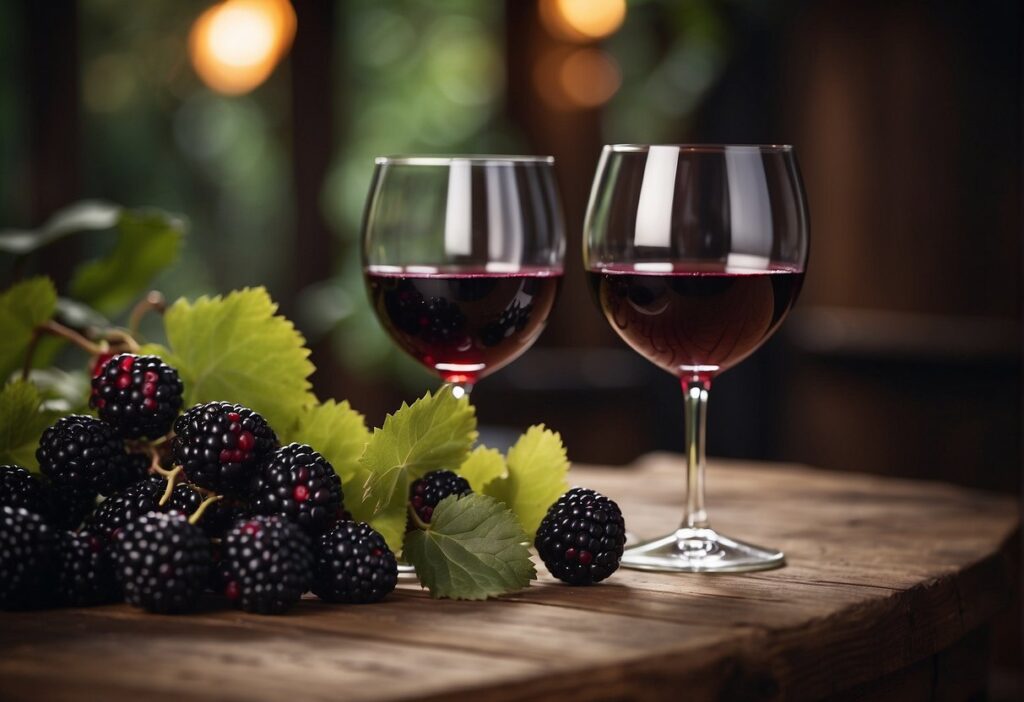
When you’re trying to articulate your wine experience, certain terms can help you pinpoint the specific characteristics you’re enjoying. Whether it’s the deep notes of vanilla from oak aging or the zesty thrill of a high-acidity wine, your vocabulary can provide a vivid picture of your tasting journey.
Common Descriptors
Your wine’s character can be as diverse as its origin. Aromas and flavors are essential components, conveying everything from fruity to earthy notes. A dry wine lacks sweetness, whereas rich wines are full-bodied with a significant flavor impact. Elegant wines are well-balanced and refined, while crisp wines reflect acidity that makes your mouth water. When you detect a hint of something like green apple or citrus, you’re tapping into the subtle flavors that define the wine’s profile.
Influence of Oak
Oak aging imparts distinct flavors to wine; it can take a wine from simple to multifaceted. Oaked wines might reveal a creamy texture, with a buttery mouthfeel often linked to vanilla, smoke, or spice notes. When you taste these elements, you’re actually tasting the result of the wine’s time spent in oak barrels. The specific kind of oak, whether American or French, and the amount of toasting applied to the barrels also plays a substantial role in the flavors you detect.
Terroir and Origin
The concept of terroir is about how a wine’s flavor is influenced by its region of origin. This encompasses climate, soil, and topography, which together contribute to a wine’s unique mineral or earthy qualities. When you taste a wine and sense the place it comes from, that’s terroir at play.
Wines from different regions carry the signature of their terroir, which is why you might find the notable limestone-driven minerality in a Chablis or the bold, sun-ripened character of a Napa Valley Cabernet Sauvignon.
Wine Storage and Service
Storing your wine under the right conditions preserves its aroma and structure, while the proper serving procedure enhances its body and taste. Learn how to optimize these elements for the best wine experience.
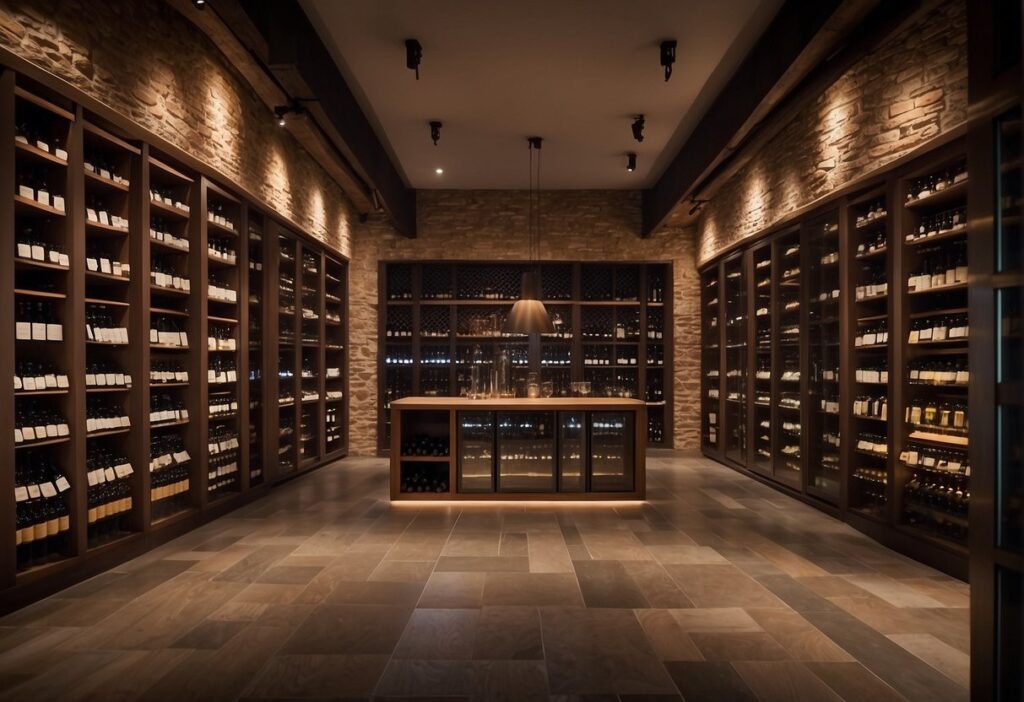
Proper Storage Conditions
- Temperature: Keep your wines at a consistent temperature between 45°F and 65°F to maintain their quality. Extreme fluctuations can damage the wine’s structure and accelerate aging.
- Humidity: Aim for a humidity level of 50-80%. This minimizes the risk of drying out the cork, which could let air into the bottle and spoil the wine’s aroma and taste.
Decanting and Serving
- Aeration: Decanting allows wine to breathe, softening the structure and enhancing both aroma and taste. Pour slowly to aerate and capture the full character of the wine.
- Serving Temperature: Serve white wines between 45°F and 55°F and red wines between 55°F and 65°F. Proper serving temperature highlights the wine’s body and complex flavors.
Exploring Wine Culture
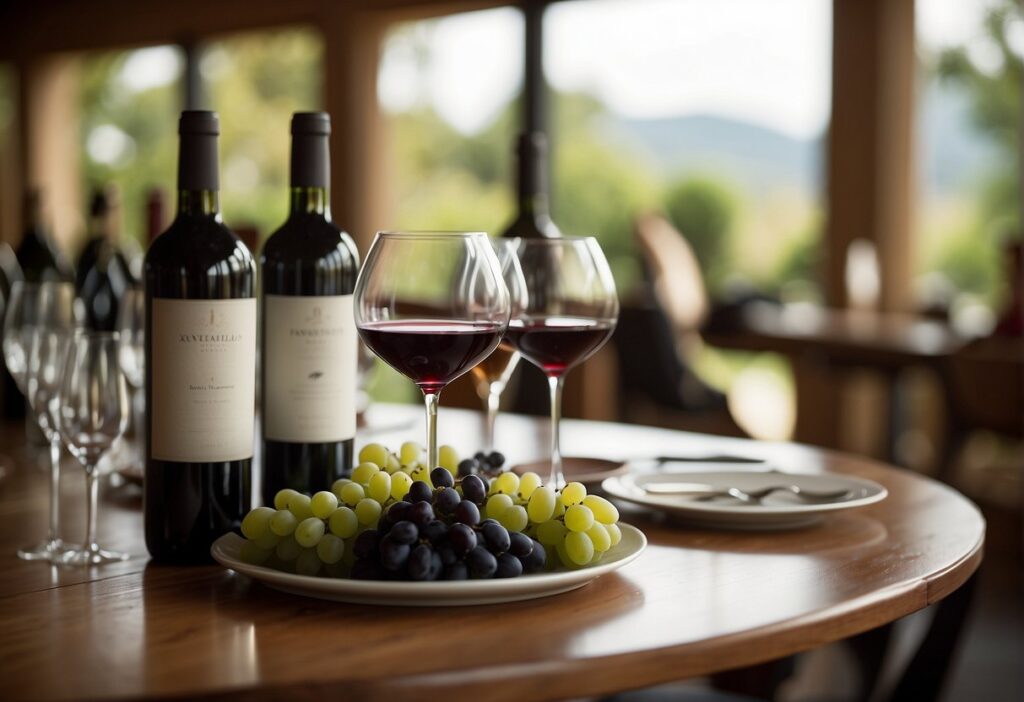
In the world of wine, understanding the nuances of taste and aromas is as important as the etiquette of tasting and the journey to becoming a wine expert. Your experience with wine will be much richer when you grasp these aspects.
Wine Tasting Etiquette
When attending a wine tasting event, you’ll find that there’s a certain decorum to enjoy and evaluate wine. To begin, observe the color and clarity of the wine by tilting your glass against a white background. Your next step is to swirl the wine gently in your glass to release its diverse aromas. Take a moment to inhale its bouquet, identifying scents that hint at the regions and varietals from which the wine originates.
On tasting, let the wine linger on your palate to appreciate its full character. Remember, spitting out wine after tasting is perfectly acceptable and part of the process to avoid intoxication. Discovering your palate aids in developing a deeper connection to the varieties and nuances that you enjoy.
Becoming a Wine Expert
If you’re keen on deepening your education in wine, consider both formal learning and self-guided exploration. Joining wine appreciation classes or obtaining certifications from recognized institutions can provide a structured approach to understanding wine varietals and regions. Meanwhile, learning from wine producers, sommeliers, and seasoned tasters will offer practical insights into wine selection and tasting techniques.
Regularly tasting different wines and taking notes is an invaluable practice. As you familiarize yourself with various characteristics like sweetness, acidity, tannins, alcohol content, and body, start to build your personal wine profile. This sensory knowledge, combined with education, will pave the way to establishing yourself as a wine expert.
Frequently Asked Questions
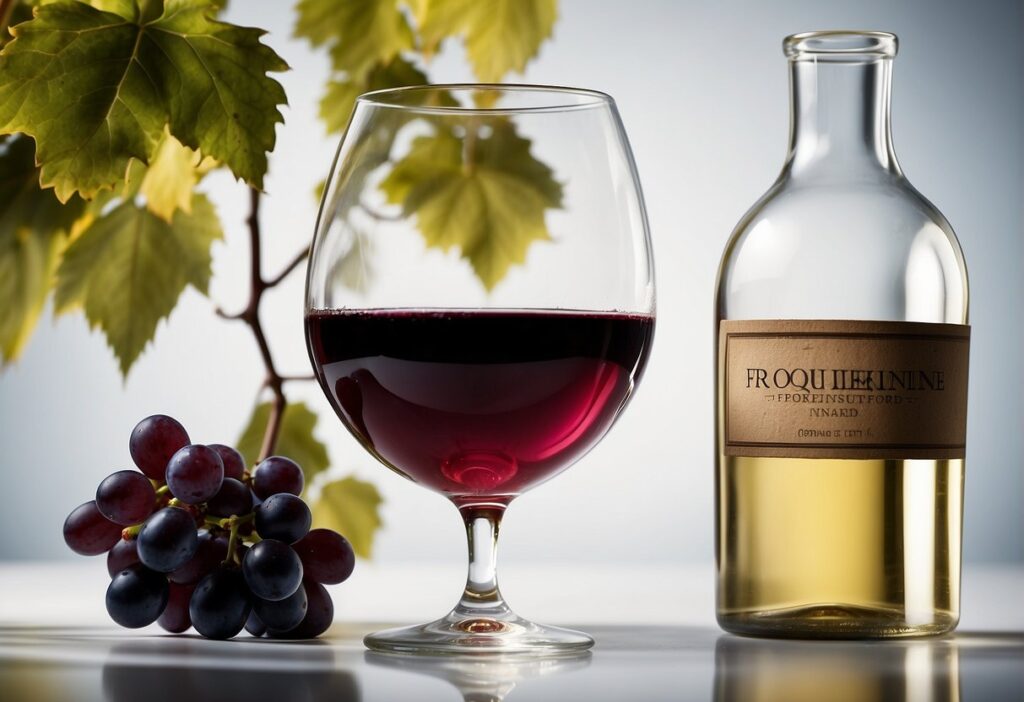
When you’re exploring the world of wine, certain questions can enhance your understanding and appreciation. Let’s dive into some frequent queries to help you become more familiar with your wine tasting journey.
What are the key features to look for when tasting wine?
Aroma, flavor, and structure are essential when tasting wine. Noticing the nuances in the scent, from fruity to earthy, and the complexities of taste, which can range from sweet to tart, provides insight into the wine’s character.
Can you explain the five basic characteristics of wine?
Certainly! The five basic characteristics include sweetness, acidity, tannin, alcohol, and body. Understanding these can help you discern a wine’s style and how it will pair with food. For in-depth information, see Discover The 5 Basic Wine Characteristics.
How do beginners distinguish between different types of wine?
As a beginner, focus on the primary flavors and color of the wine. Reds typically showcase berry or plum flavors while whites might lean towards apple or citrus. Observing the wine’s hue, opacity, and viscosity can also give clues to the type.
What terms should I know to describe the taste and texture of wine?
Familiarize yourself with terms such as crisp, buttery, oaky, and minerality. Descriptors for texture might include silky, velvety, or chewy. These terms will help you communicate your sensory experience more precisely.
What are the different classifications of wine and how do they differ?
Wine classifications generally refer to the region of production, grape varieties, and winemaking practices. For example, Old World wines often have subtler flavors compared to the bold, fruit-forward New World wines.
How can one assess the quality of a wine?
To assess quality, evaluate the wine’s balance, length, intensity, and complexity. A high-quality wine will have harmonious flavors that linger pleasantly, exhibit distinct aromatic notes, and offer layered complexity that unfolds with each sip.

